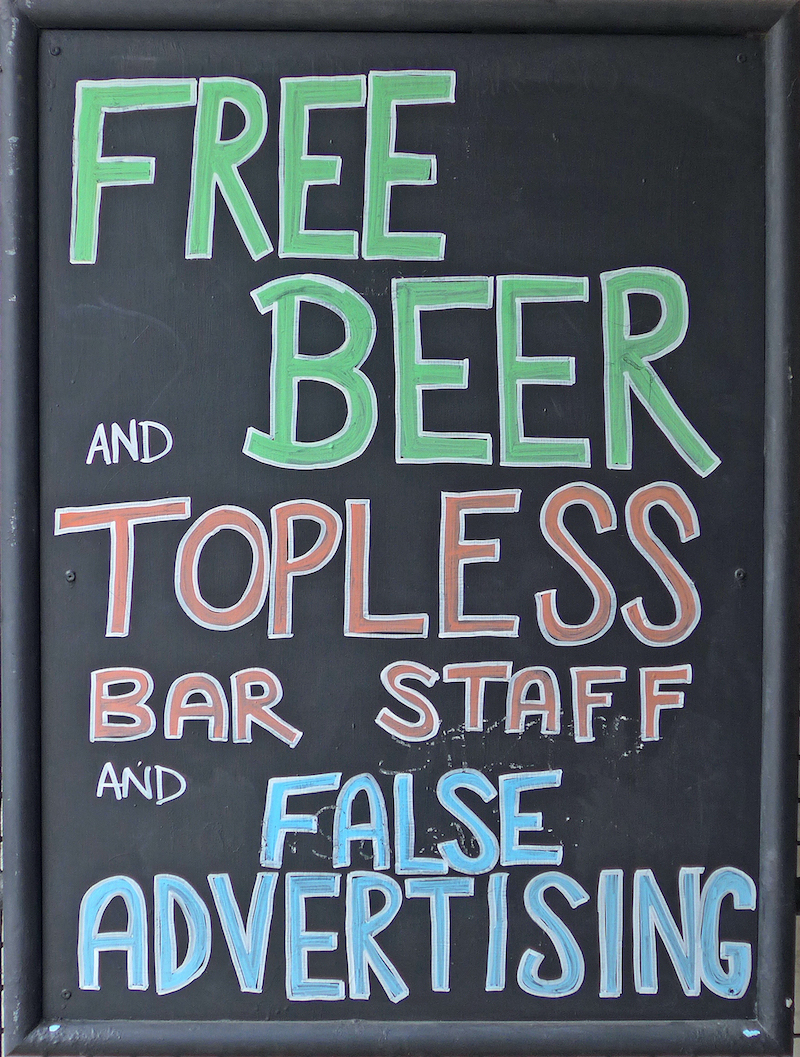
Why Free-to-Play Game Advertising is Evil
If you’ve recently played any mobile game – particularly the “free to play” – you’ve probably seen more full-screen interstitial ads for other mobile games than you could ever possibly want. The reason is simple: A North American mobile interstitial ad can earn a solid $5 CPM. Translated: each viewed video is worth more than listening to one stream on Spotify. Today, you can reliably earn more by spamming the App Store with slot machine games than recording an album.
In this particular flavor of predatory advertising, free games earn money by showing ads for other free games, bouncing users from one honeypot to another until they eventually land in one that they’re willing to buy some honey. It’s equivalent to running ads for free tastes of soda between every sip of a water fountain; a momentary loss of will power leads into another new land of dopamine stimulation.
But the ads weren’t free; that money came from somewhere.
More specifically: those free-to-play game ads were purchased by earlier mobile game dopamine addicts. I don’t use the “A” word lightly here. The behavioral pattern that generates 90%+ of mobile game revenues is the same one that powers Las Vegas. Even for titles that aren’t explicitly trying to coerce or trick players into spending money, the most important metric for all of these titles is engagement: how often do you play, for how long.
Case Study: Playrix
Playrix is a Russian developer of mobile games. Their current roster of titles includes well-known copycat games Township, Fishdom, Gardenscapes, Homescapes, and Wildscapes. Township is a city-building game inspired by the legacy of Farmville; all of the other titles are “match 3” games inspired by the success of Candy Crush. The two founders of Playrix are both billionaires.
The basic marketing formula for free-to-play casual games has certainly evolved over the past decade, but it still reduces to a simple formula:
- Make some mobile ads.
- Target the ads on other mobile games.
- Measure install rates (what percentage of viewers install your game) and paid conversion rates (what percentage of viewers eventually spend any money inside of your game)
- Double down on the ads with positive ROI, and replace the underperformers with new candidates.
- Repeat until you have earned infinite money.
In the completely unregulated landscape of mobile interstitial advertising, this shit works. It works because (at least in the US) no consumer protections exist to ensure the claims of these ads are legitimate. Any game advertiser can promote their game as pretty much anything they like; it doesn’t matter if the story, gameplay, genre, interactivity, or core claimed features actually exist in the game. That’s why an ad that looks like this:

Actual Gardenscapes advertisement
Actually plays like this:

Actual Gardenscapes gameplay
There are so 👏 many 👏 complaints 👏 and 👏 examples 👏 of 👏 this 👏 manipulative abuse that it’s hardly worth my effort to write them down.
Instead, let’s dig into three related questions: (1) why do companies do this, (2) why doesn’t this happen in all product categories, and (3) why it matters.
Why companies engage in false advertising
(short version: to become billionaires)
In the case of Playrix, the obvious answer is that aggressive, predatory and provably false advertising transferred a few billion dollars from Americans to two freshly-minted Russian oligarchs. Playrix isn’t alone in this behavior, however: Yotta Games (Chinese mobile game studio), Firecraft Studios (another Chinese mobile studio that actively attempts to obscure their identity and location), Pixel Federation (Slovakia), Evony (US spammer of blog comments and racy ads of bikini models), Oasis Games (Chinese studio), InnoGames (German)…all of these companies, and dozens more, employ the gaming equivalent of Ponzi advertising to siphon billions of dollars out of American consumers. Returning to the marketing formula: the deceptive ads have a provably higher installation rate per view than the earlier, more “honest” ads.
I wish I could say this was a recent development, but casual gaming has been this way ever since the Facebook Zynga era. (Don’t you remember all of that Mafia Wars and Farmville spam in your news feed?) The transition from paid entertainment to casino capitalism is what made casual gaming possible. For the truly big “whales,” Zynga would offer advantageous exchange rates between fiat currency and in-game currency when purchasing directly from Zynga via wire transfer. This saved Zynga on bank transaction fees, and smells no different than Caesar’s Palace comping high rollers with food and hotel rooms in exchange for minimum spends.
Advertising exists to influence human behavior. False advertising predates the creation of the Food and Drug Administration in 1906, which was created to fight a century’s worth of false advertising for miracle cures. Most snake oil tonics of that era were alcohol laced with opiates or other mind-altering substances; when too many people started dying, government regulation emerged. Regulation was needed because people trust claims they want to believe, and the unscrupulous among us take advantage of that trust for personal profit.
And so: companies engage in false advertising because it’s often easier to make money with lies than creating new or better products. It’s why today’s pharmaceutical giants push to obtain new indications for on-market drugs: it’s easier to sell drugs via marketing than with new R&D. It’s also an unspoken motivation behind many industry’s self-regulatory bodies such as the ESRB.
Why companies don’t engage in false advertising
(short version: fear of the crowd, not fear of regulation)
For now-obvious reasons, the pharmaceutical industry accepts heavy regulation from the FDA; public safety demanded it. For products and services without health considerations, we have the Federal Trade Commission. The FTC would not exist without Chevron, for in 1911 a Supreme Court case ruled against Chevron (then Standard Oil), which was vertically integrated from petroleum production through to the gas pump through exclusivity contracts with station operators. This exclusivity was extremely anti-competitive, at least as far as Big Business is concerned; thus began a multi-year debate on the nature of competition and antitrust requirements in the US economy, culminating in the FTC.
The FTC has very little enforcement capabilities of its own, however, and must refer criminal allegations to the Department of Justice. There were fewer than 150 FTC enforcement actions in 2019, including this slap-on-the-wrist for Cambridge Analytica and this AT&T settlement related to false advertising on its unlimited data plans. AT&T’s penalty? $60 million and a promise not to falsely advertise. CA’s penalty? A promise not to falsely advertise its intentions and a commitment to deleting data.
Recent FTC enforcement examples seem to suggest that regulatory enforcement is not a significant reason to avoid false advertising claims – the economic penalties are grossly overshadowed by the gains. Our social contracts nudge corporations, like some sort of abstract ethical compass; the business risk comes not from fines, but the long-term risk to reputation and the survivability of the business. Far more dangerous to AT&T for the world to believe they steal data from its users than for governments to actually discourage the behavior.
Returning to our current plague of disingenuous mobile game advertising: The entire category is made of transient experiences. Very little “brand loyalty” exists between a player and a studio, and the world of mobile advertising is impossible to monitor. And so, it has become a bazaar of pickpockets and scams and cheaply made copycats, optimized entirely on capturing a few bucks and fading back into the crowd. And doing it again. The only reason the behemoths like EA and Activision don’t flagrantly abuse advertising claims is that their products are tightly associated with their brands, and fear of chasing away a Blizzard or Bethesda loyalist is far more motivating than any risks posed by the FTC.
For anyone with a few bucks and a malleable moral code, it’s a phenomenal low-risk way of making lots of money.
(Sidebar: it will be interesting to see how the FTC’s exploration of “loot boxes” – aka slot machines – plays out.)
Unfortunately, you can find examples of bad actors in any industry. It’s particularly rampant in markets with larger numbers of smaller actors, since there’s less focus on preventing predatory or monopolistic behaviors by the top of a market. Regulatory agencies like the FTC are under-resourced, and so they focus on cases with oversized impact: finance, real estate, medical, food, competition between large corporations with sufficient lobbying and political capital. I challenge you to find the appropriate form on the FTC website for submitting a complaint about mobile advertisements.
And so: companies don’t use false advertising if (1) they’re large enough that they think the FTC might intervene or (2) brand loyalty matters to their business model.
False advertising is both an ethical and economic issue
False advertising has obvious economic effects, since billions of dollars change hands every year in deceptive gaming. The impact is even larger and has much greater ability to cause harm in industries such as credit monitoring or data privacy or even online dating.
The ethical harms can be more subtle. But the more that businesses are able to profit in extreme ways through manipulating our trust, the less trust that remains for legitimate actors. It’s a different sort of cannibalization of long-term value for short-term gains, and it only ends through aggressive punitive regulatory action or a lifetime of distrusting every advertisement you see.
Trust, but verify no longer suffices.
Verify, then trust.